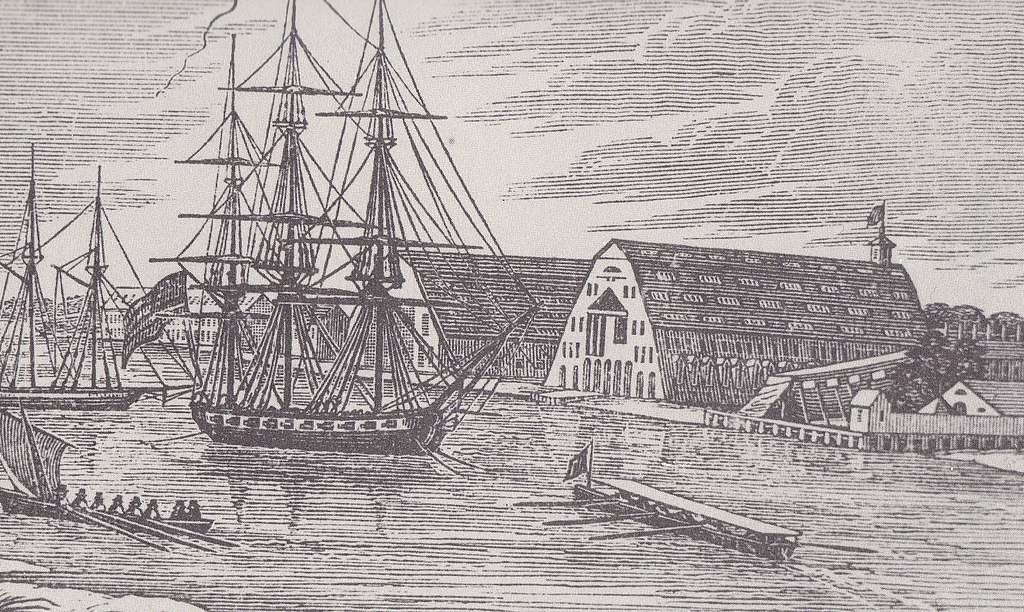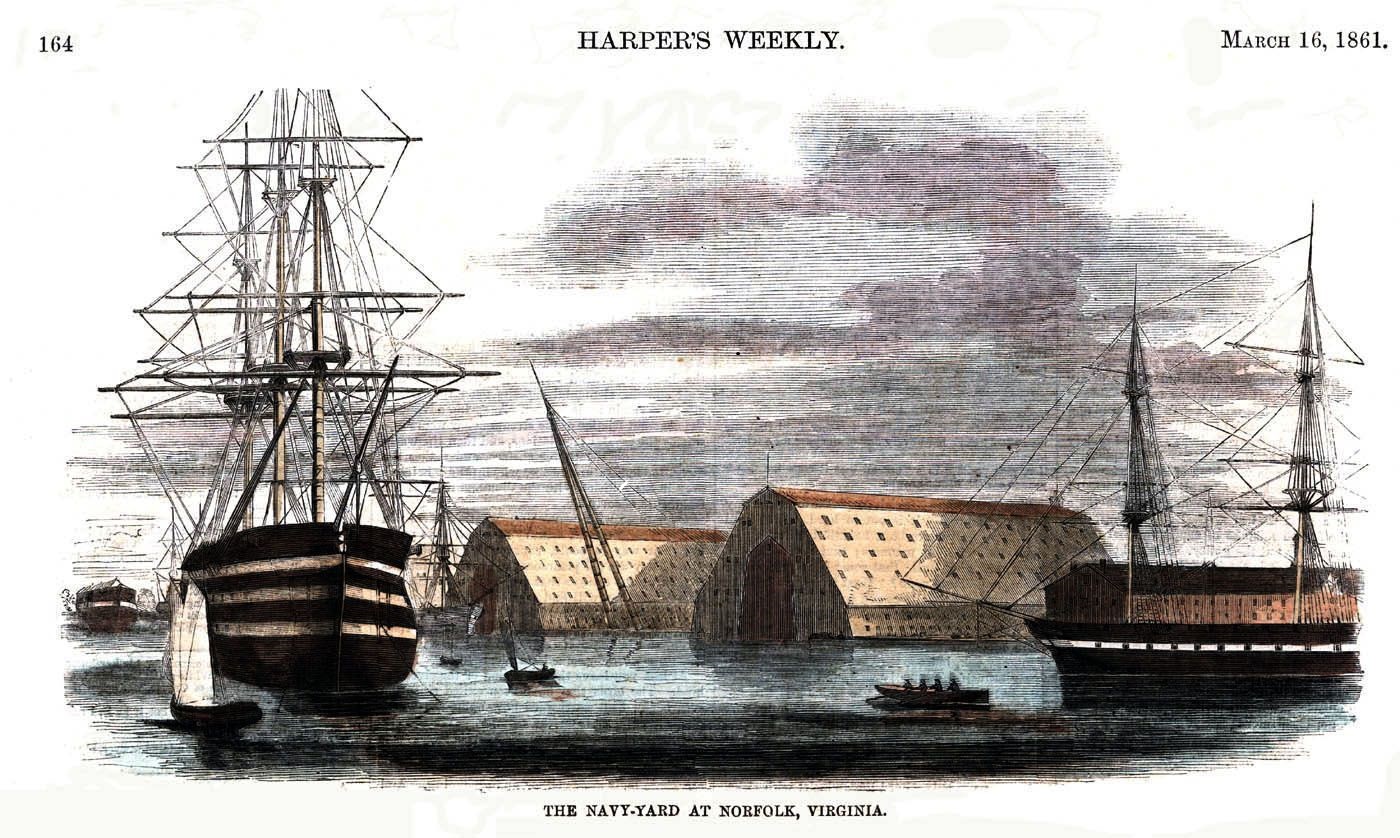
Gosport’s Beginnings
Gosport Navy Yard, located in Portsmouth, across the Elizabeth River from the busy port of Norfolk, Virginia, was one of the largest shipyards in the United States. Norfolk merchant Andrew Sprowl established the yard in 1767. Sprowl remained a loyalist when the Revolutionary War erupted. The yard was confiscated by the Commonwealth of Virginia, and then burned by the British in 1779.
The yard remained inactive until 1794, when the property was leased by the United States. Captain Richard Dale served as the superintendent for this new government shipyard. When the US Navy was formally established in 1798, it assumed operation of the yard and designated it as the Gosport Navy Yard.
The frigate USF Chesapeake, commissioned in 1799, was the first warship constructed at Gosport. The yard was purchased from the Commonwealth of Virginia in 1801 with Captain Samuel Barron as its first superintendent.
America’s Finest Navy Yard
Gosport Navy Yard reached its peak during the late 1850s, employing more than 1,400 workers. The completion of the steam screw frigates USS Roanoke and USS Colorado in 1859 proved the yard’s capabilities to construct modern warships for the US Navy.
Despite all these successes and improvements, the sectional crisis of 1860 cast a spell of gloom over Gosport Navy Yard. The workforce had dropped to fewer than 700, and little work was accomplished. Only 75 men were repairing USS Germantown, and construction of the new ship house had virtually stopped.
Almost a dozen ships could be found at the yard, either placed in ordinary or awaiting various types of repairs. These United States vessels included: Pennsylvania, 120 guns; Columbus, 74 guns; Delaware, 74 guns; New York, 74 guns; United States, 50 guns; Columbia, 50 guns; Raritan, 50 guns; Merrimack, 40 guns; Plymouth, 22 guns; Germantown, 22 guns; and Dolphin, four guns.
Many of the United States warships in the yard were dismantled or in various states of repair. The Pennsylvania was stuck in the mud, serving as a receiving ship, while Delaware and Columbus were in the “Rotten Row” section of the lower wharf, deemed basically worthless.
Gosport in Confusion
By early 1861, Gosport was in “disorder and confusion,” according to Federal Secretary of the Navy Gideon Welles. Considering the impending crisis in Charleston, Welles ordered USS Cumberland, already anchored near the yard awaiting repairs and under the command of Flag Officer Garrett J. Pendergrast, to remain in Hampton Roads to protect Gosport and Fort Monroe. Welles believed that Cumberland’s 24 guns could act as a deterrent to any secessionist move against any nearby Federal facilities.
One reason for the unprepared state and utter confusion at Gosport Navy Yard was its leadership. The problem primarily rested squarely on the shoulders of the yard’s commandant, Flag Officer Charles Stewart McCauley. McCauley had served in the US Navy since he was 15 years old. He fought on Lake Ontario during the War of 1812.
In 1834, McCauley was given command of his first ship and promoted to captain in 1839. McCauley’s career included: command of both the Pacific and Atlantic squadrons; command of the Washington Navy Yard during the Mexican War; and later, served as commander of the Home Squadron.
McCauley was appointed commandant of Gosport Navy Yard in 1860, and it appeared to be a wise choice. However, the 67-year-old officer was rumored to have taken to drink, and was often ridiculed for being too old for active command. During the tense days of April 1861, many would question his decision-making abilities.

The Navy-Yard at Norfolk, Virginia. Harper’s Weekly, March 16, 1862.
Gosport’s Importance
Gosport Navy Yard was recognized as a key naval resource by the North and South alike in early April 1861. While most of the older and outdated ships in ordinary were of limited value, it was the yard itself— its machinery, shipbuilding assets, supplies and armaments, coupled with the steam screw frigate USS Merrimack — that was seen as the valued asset that would enable creating or breaking any blockade possible. In spring 1861, all eyes looked greedily upon Gosport; however, poor Union leadership would result in the Confederates securing the wherewithal to build a navy.
Excerpted from CSS Virginia: Sink Before Surrender, John V. Quarstein. (Charleston, SC: The History Press), 2012. Available in the Museum’s Web Shop: https://www.google.com/url?q=https://shop.marinersmuseum.org/sink-before-surrender-pb.html&sa=D&source=hangouts&ust=1587055613966000&usg=AFQjCNGlDlDHoLEWTXRLO71bPBmtARqV5A